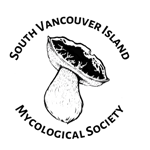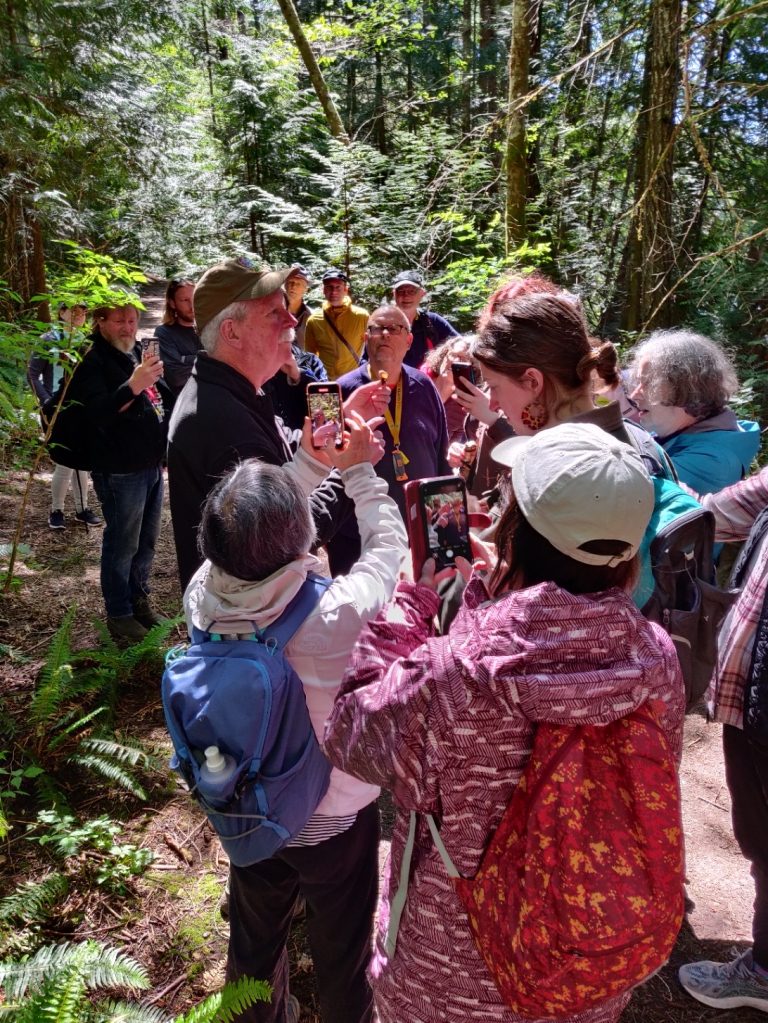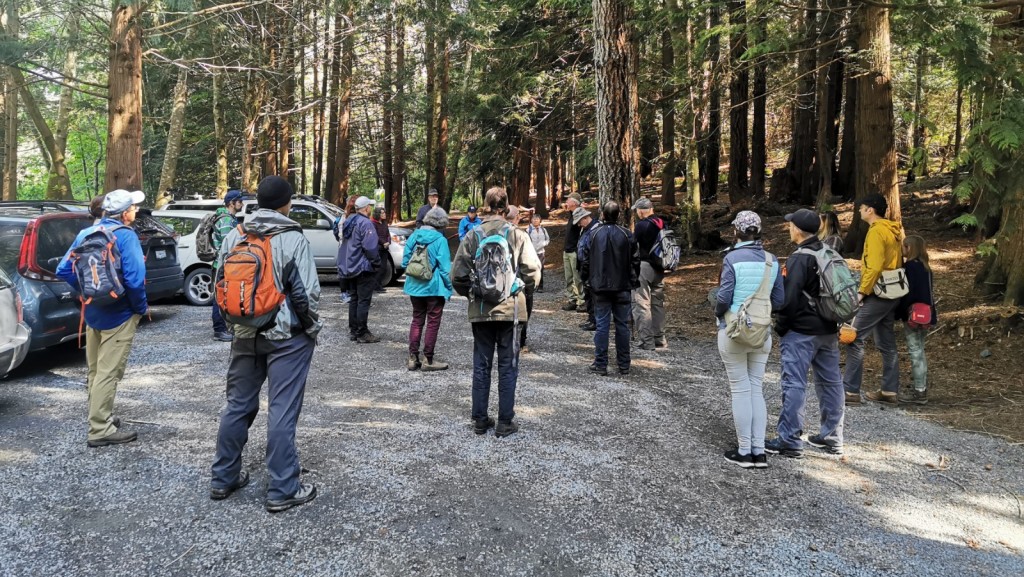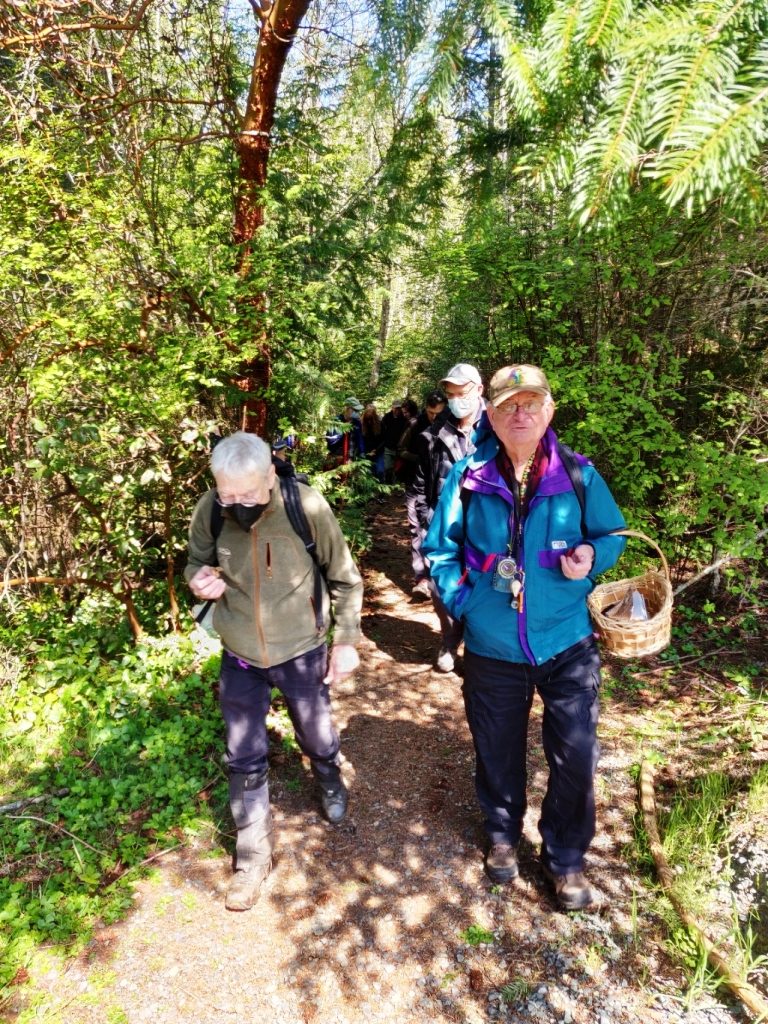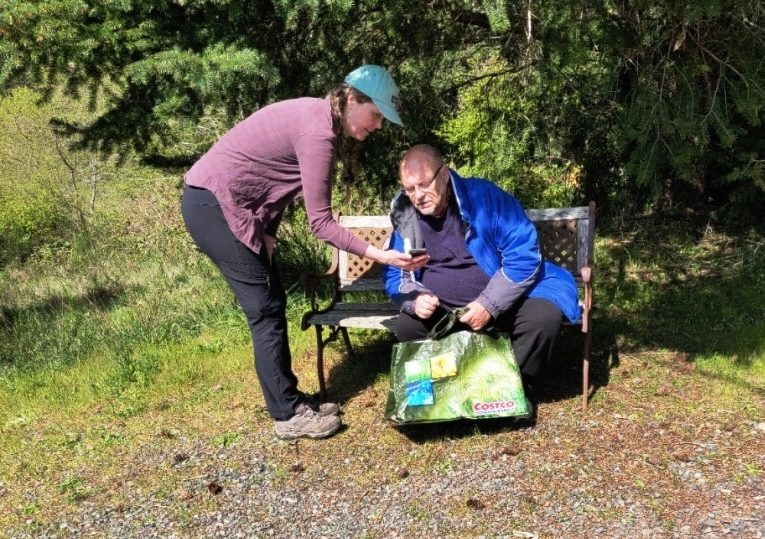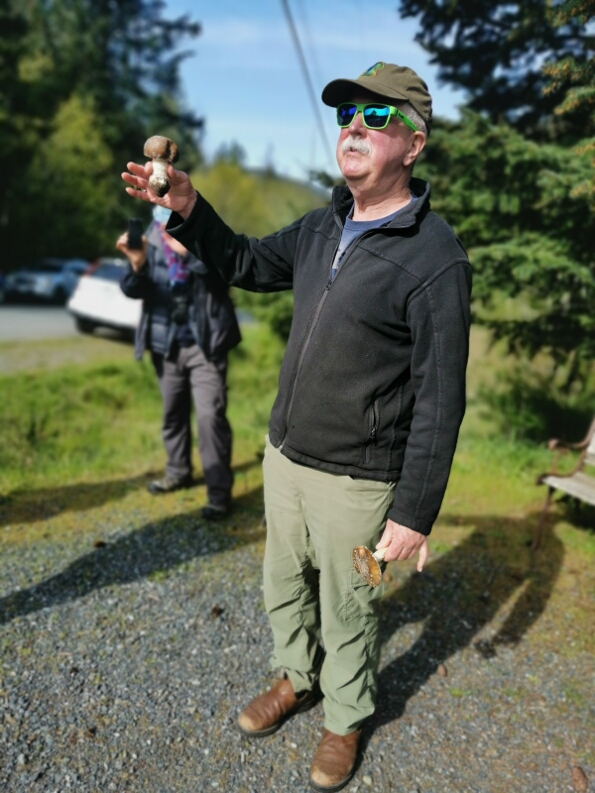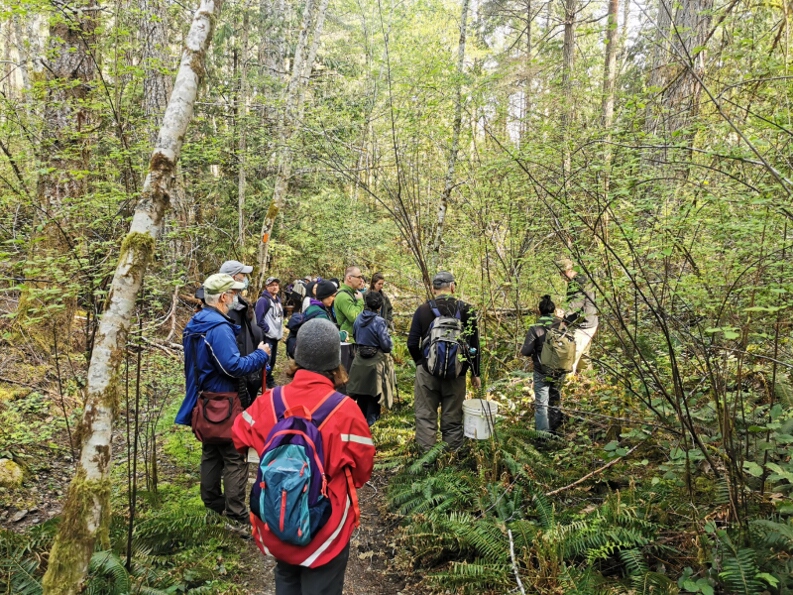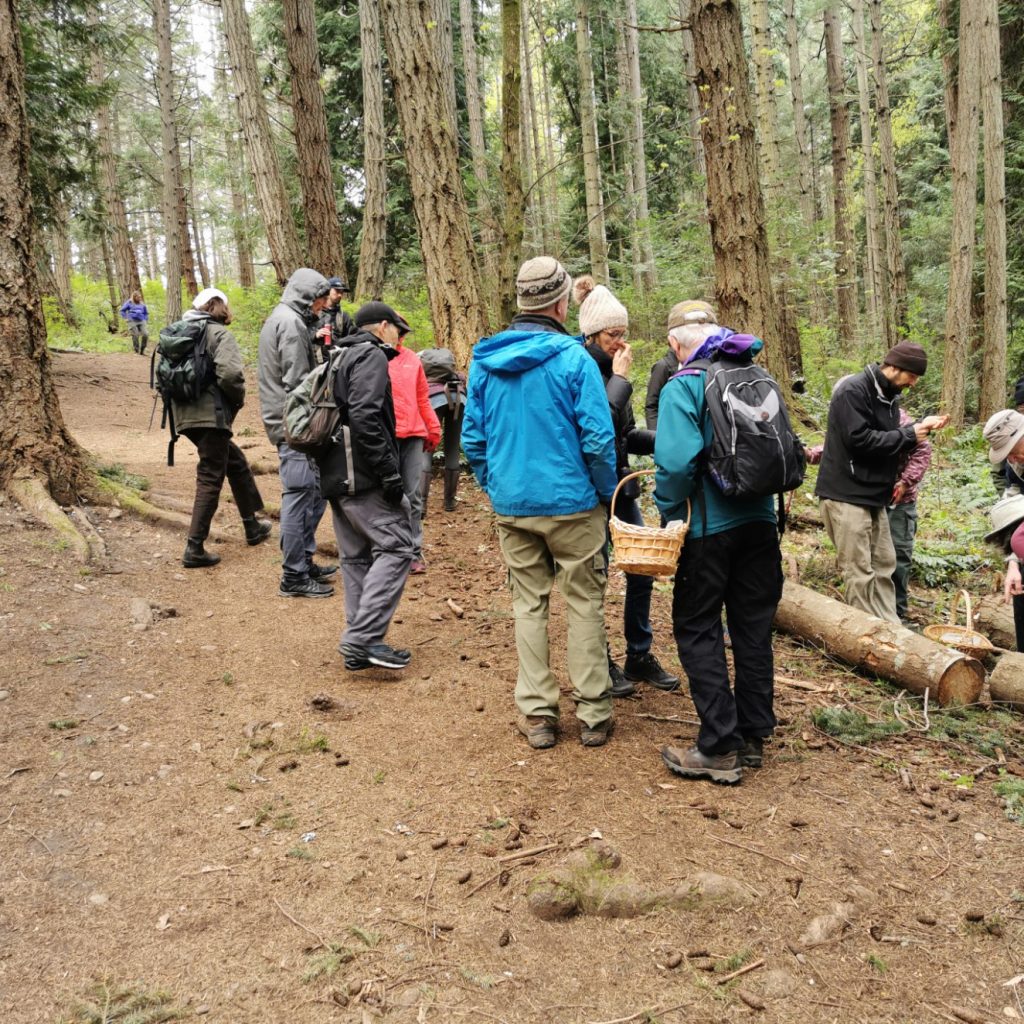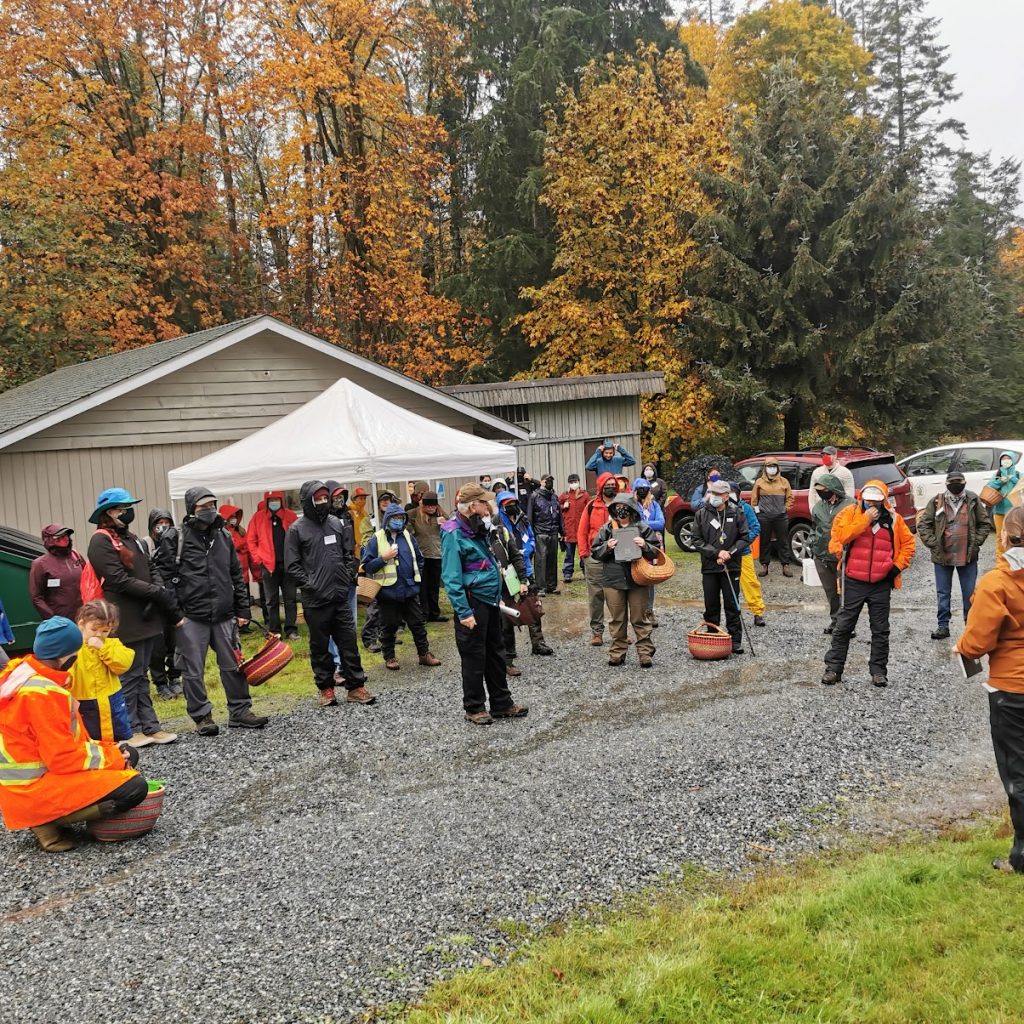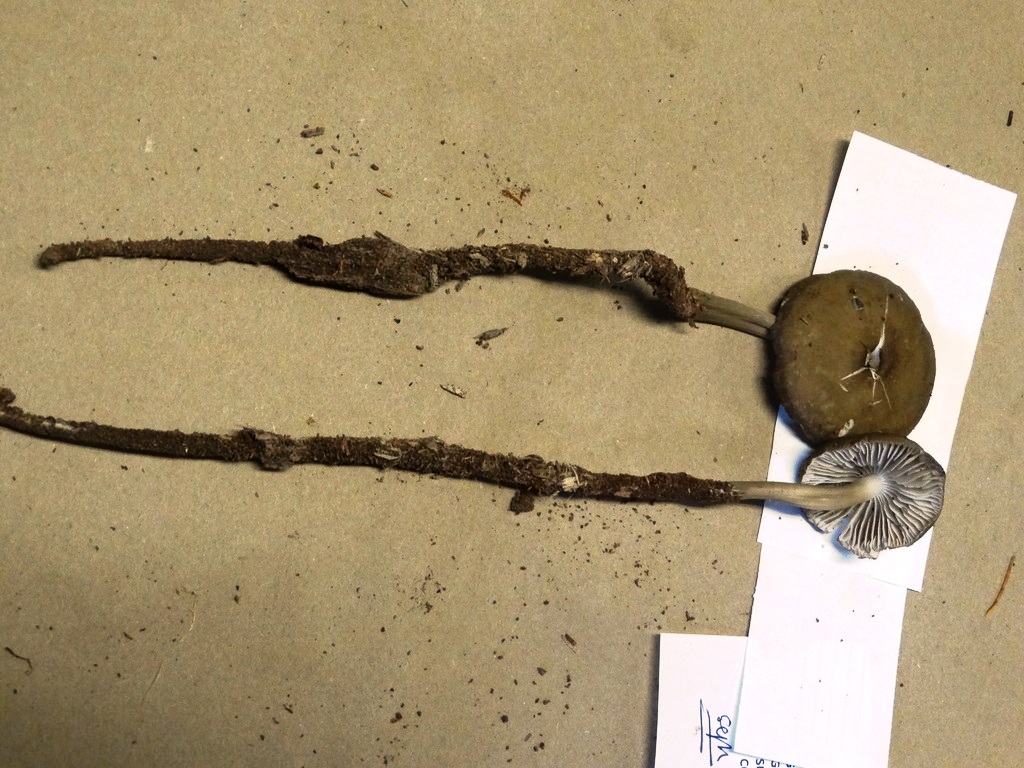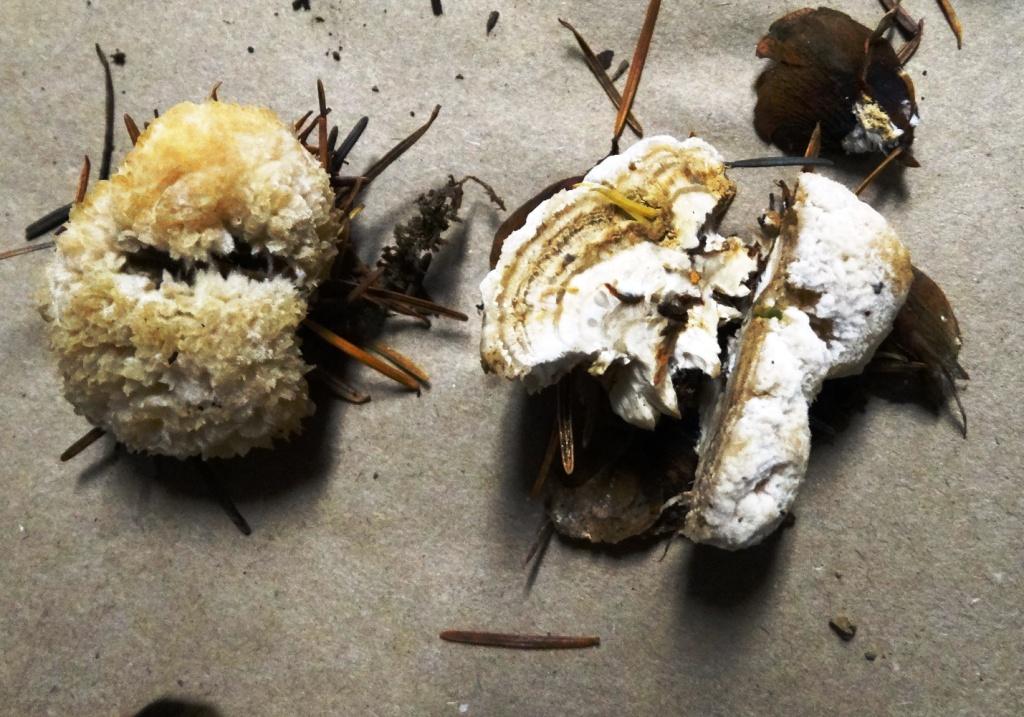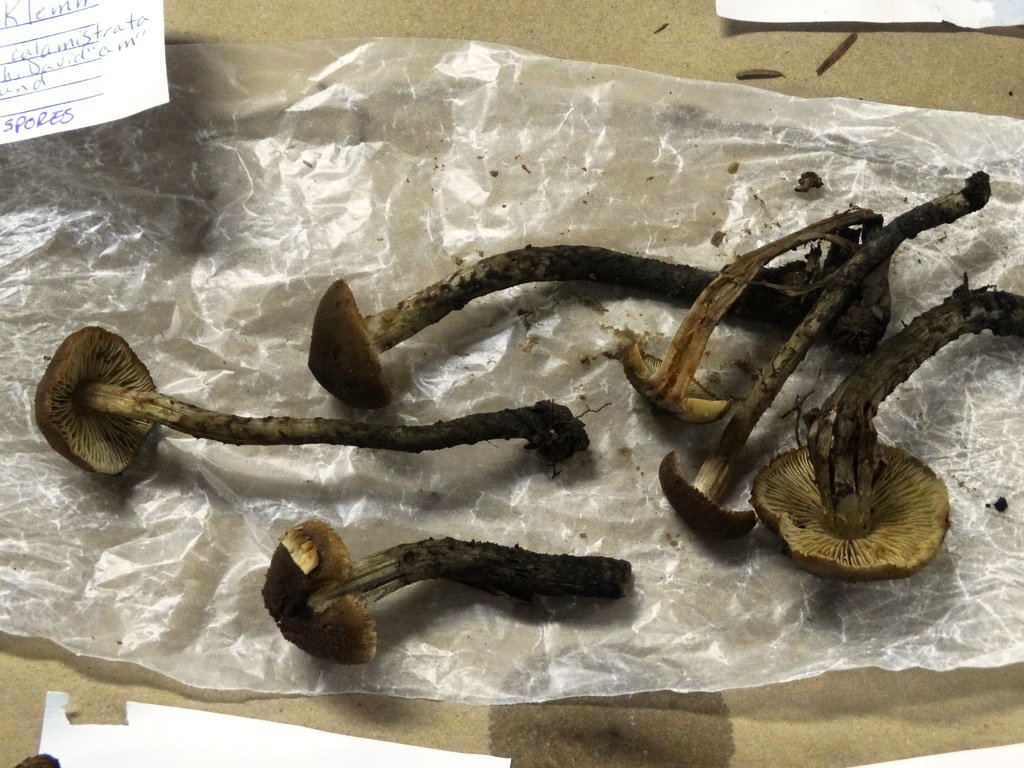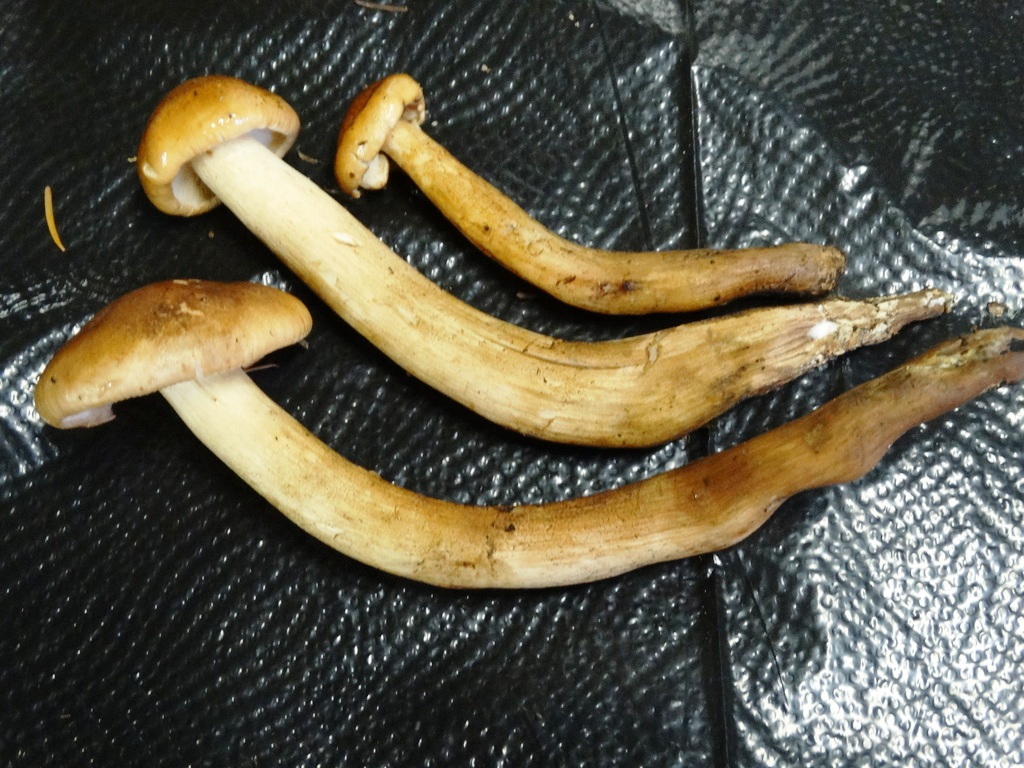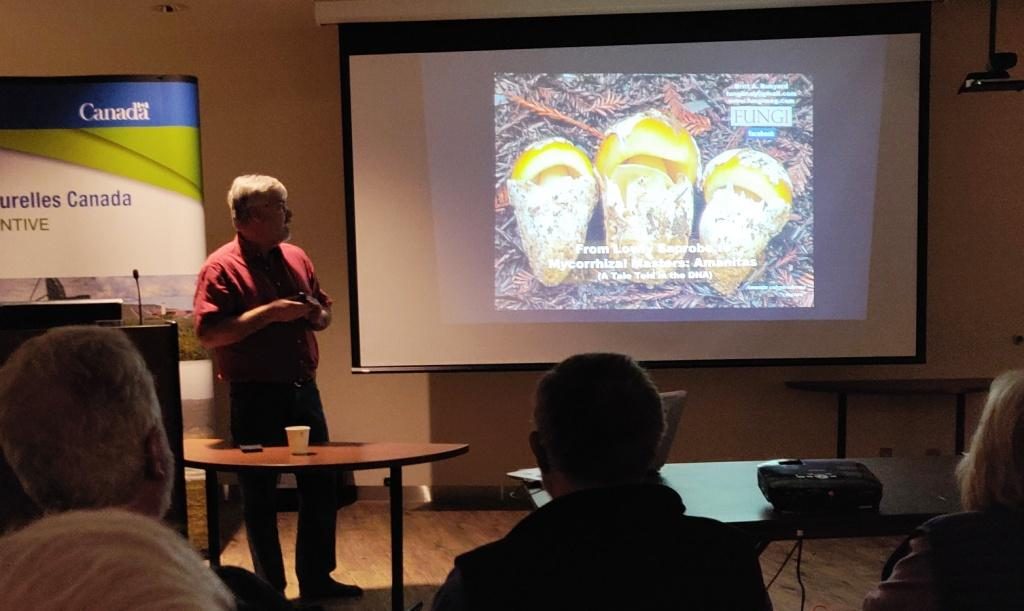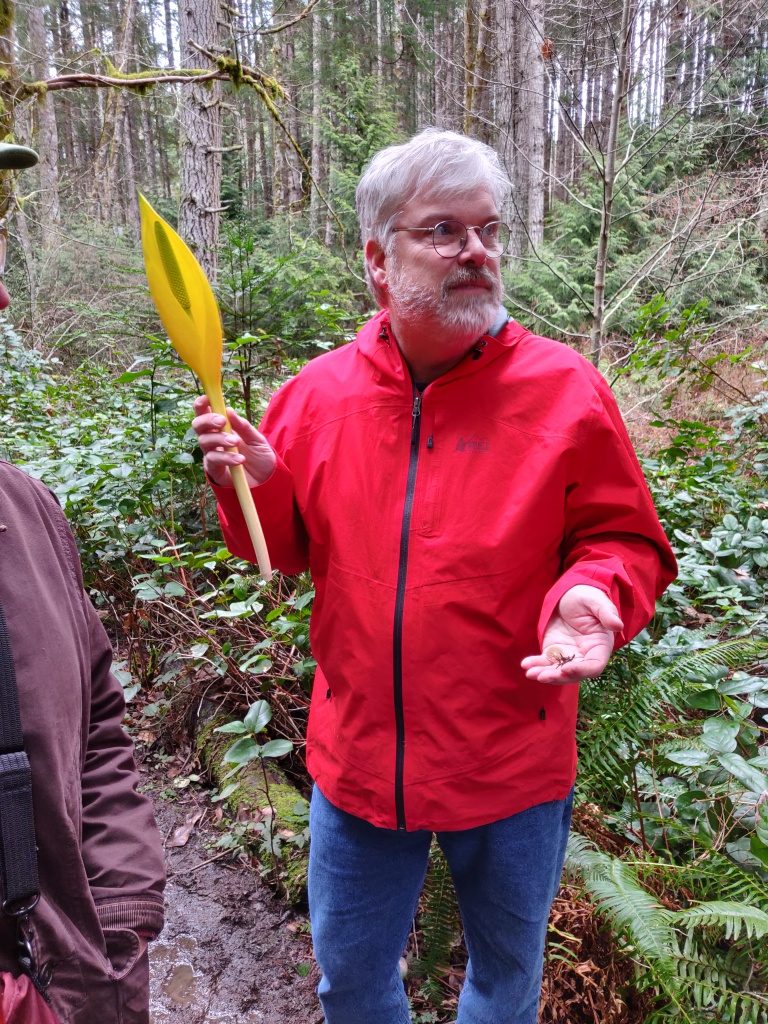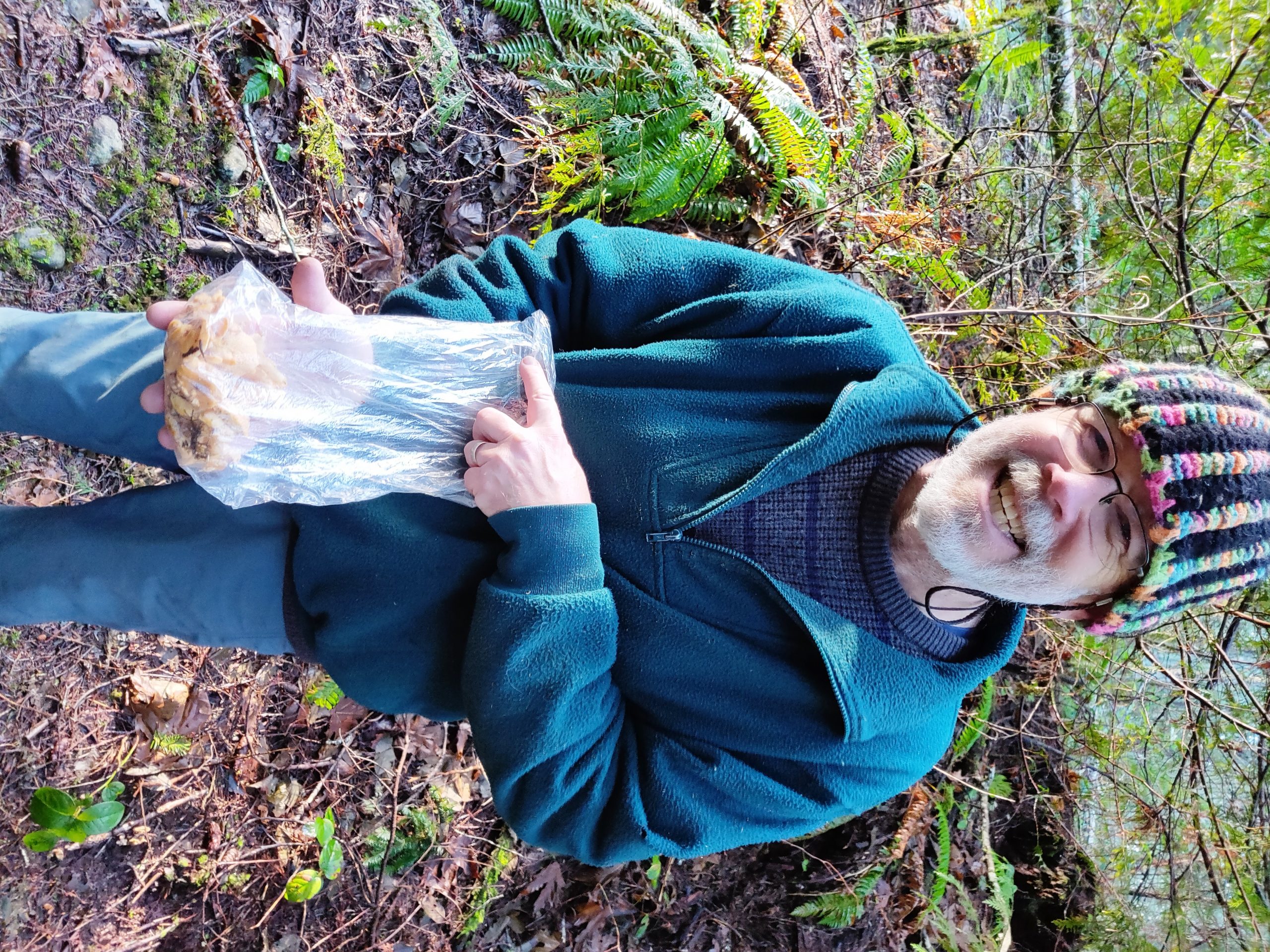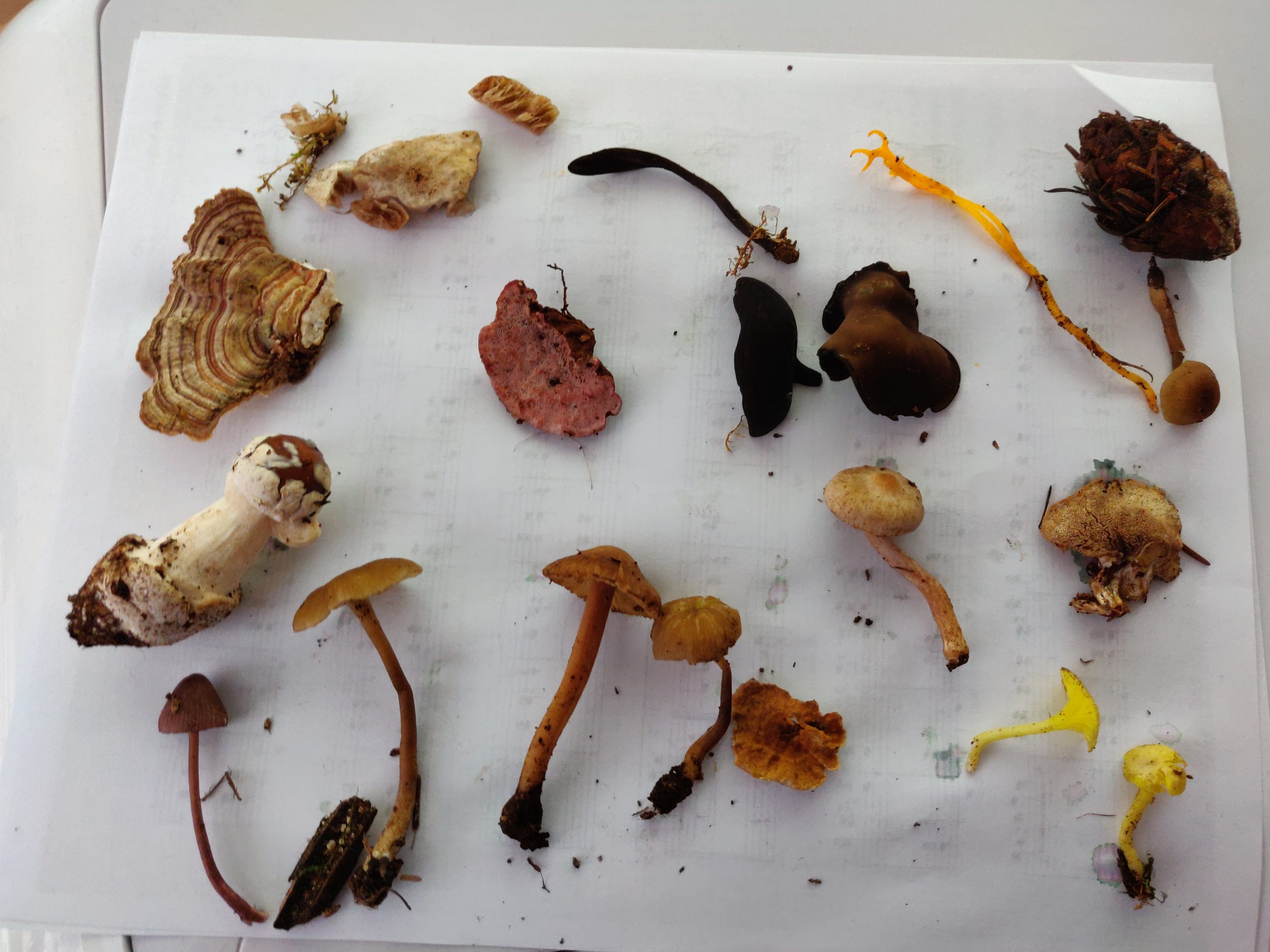Two dozen members of SVIMS met on Saturday, May 21, 2022, at Metchosin’s Blinkhorn Lake Park to search for spring fungi.
The searchers found 30 species, breaking the spring 2022 record (April 23) for the number of mushroom species found in a foray. The observations can be viewed on iNaturalist.
Steve Strybosch and Melanie Hesz coordinated the registration and sign-in. Kem Luther and Andy MacKinnon came along to help with identification. Elora Adamson assisted with the species photography and recording.
Several of the finds were spring cups:
(1) The asco Eyelash Cup, Scutellenia scutellata, is not exactly rare but always a thrill to find.
(2) Another cup, the Brown Bowl Fungus, Tarzetta catinus, is more of a rare find. This was the first Metchosin sighting of this asco.
(3) The Hairy Fairy Cup, Lachnum virgineum, showed up on some wood impregnated with blue Chlorociboria mycelium.
In addition, forayers also found Alpova concolor and Inocybe stellatospora. The inocybe has not been reported from BC on iNaturalist before, but there are several observations on Mushroom Observer, including ones by Adolf and Oluna and by Fred Rhoades (a Washington friend of SVIMS). Whether these two new finds will hold up depends on what identifiers say about them in coming weeks.
